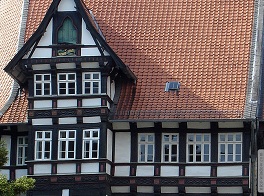By Jesse Colombo (This article is frequently updated)
Germany’s housing bubble is a part of the overall Post-2009 Northern & Western European Housing Bubble that has inflated because of the strong investment inflows that these countries have attracted since the Global Financial Crisis due to their perceived economic safe-haven statuses, serving to further inflate these countries’ preexisting property bubbles that had expanded from the mid-1990s until 2008.
While Germany was fortunate and sensible enough to have avoided engaging in the 2000s housing bubble folly with the rest of the world, Germans certainly seem eager to make up for lost time. The European Central Bank’s ultra-low key interest rate, while appropriate for the ailing PIIGS nations, is too low for faster-growing Germany resulting in negative real interest rates and fears of inflation. As is common in countries with negative real interest rates, German investors are pulling money out of low-yielding bank accounts and investments and plowing it into all types of real estate, causing prices to boom for the first time in a very long while. Property prices in Munich and Hamburg rose by more than 10% in 2011 [1] , while obscure fields and forests in northeastern Germany’s Uckermark region have soared by as much as 20 to 30 percent. [2] It is too early to determine if Germany is in the midst of a property bubble, but it is certainly a situation that warrants monitoring, especially if there is an improvement in global economic growth and sentiment.
As is common in countries with negative real interest rates, German investors are pulling money out of low-yielding bank accounts and investments and plowing it into all types of real estate, causing prices to boom for the first time in a very long while. Property prices in Munich and Hamburg rose by more than 10% in 2011 [1] , while obscure fields and forests in northeastern Germany’s Uckermark region have soared by as much as 20 to 30 percent. [2] It is too early to determine if Germany is in the midst of a property bubble, but it is certainly a situation that warrants monitoring, especially if there is an improvement in global economic growth and sentiment.
German Housing Bubble Articles List
Questions? Comments?
Click on the buttons below to discuss or ask me any question about these bubbles on Twitter or Facebook and I will personally respond:

